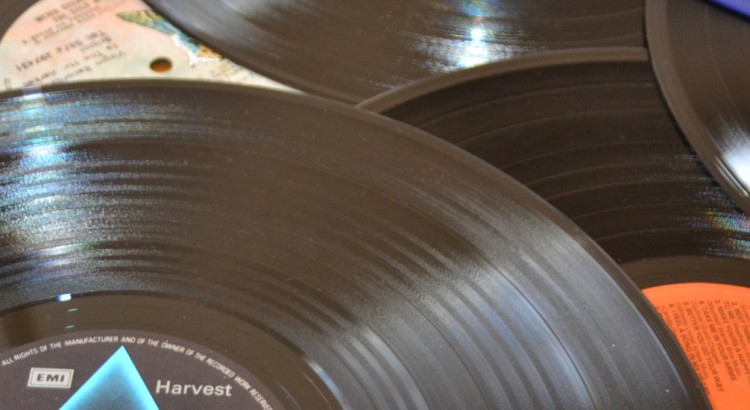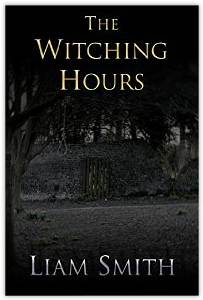I’m big on my music. I think I treat my music library more as an art collection – with myself as the curator – than I do as an assortment of potential listening pleasures. All my albums are there, right now, alphabetically ordered on their shelves. I’ll buy an album even if it’s not my favourite, just to fill a hole in my collection. In my world, I don’t own an album till I own the CD – MP3 downloads are a bonus, but I treat them differently. They’re… musical ghosts. Not really there. Maybe that’s why I’m taking it further. Maybe that’s why I’m getting into the vinyl revival.
True Music
It takes owning a CD to its natural conclusion, doesn’t it? The vinyl revival is real; records have even got their own section in HMV, so I can’t be the only one who sees it as something a bit special. There’s something about owning an LP that means you possess that album in its ultimate form.
“Do you like The Dark Side of the Moon?”
“Mate, I’ve got the vinyl.”
I’ve got to confess, my copy of Dark Side was lifted many moons ago from my Dad’s collection up in the loft – maybe that adds an appeal too. Maybe it feels more like I’ve got the genuine article, and not just a repressing. Perhaps, subconsciously, it makes me feel like I was there, when the record was made. That the sense of wonder and amazement felt by those who heard that groundbreaking piece of music back in 1973, well, I’m feeling it too. Obviously, I downloaded the MP3s too to hear it in digital high quality.
Age of the Album
There’s something else a record forces you into, and that’s commitment. In an age of iPods and Media Players, it’s easy to pick and choose odd songs, make playlists, dash between album and artist and genre. There’s a time and a place for that – God knows I’ll knock together a mixtape of steady heavy rock songs from across my iPod before going out for a run (not a lot of Pink Floyd on that playlist) – but I think music should really be appreciated as an extended piece.
When Mozart and Verdi composed their masterpieces, they weren’t writing three-minute chart hits. They designed hour-long suites that ebbed and flowed, upped and downed, explored themes and moods. They were complete works of sound. A standard cinema-ready film usually runs for an hour and half to two hours – because a story of mixed moods and dynamics simply can’t fit into anything smaller. A three-minute ‘film’ is more often a trailer and, accordingly, I think of singles on the radio as trailers for albums.
Compact disc ≠ Compact music
An average record can house around forty to fifty minutes of music. The advent of CDs meant running times increased to up to eighty minutes, and bands frequently took advantage of this in the nineties. The Red Hot Chili Peppers, Nine Inch Nails and yes, Pink Floyd, all produced recognised classics that clock in at over the hour-long mark – what in vinyl terms would have been a double album.
Some contemporary groups, however, make a point of reducing album runtimes back to below the forty minute mark – a few British indie groups spring to mind. Is this a conscious attempt to return to the feel of the bygone era of vinyl, or is it just how long a collection of popular music should be? Maybe it’s just that the audience has a shorter attention span nowadays. Perhaps the audience has always had a short attention span, and were frustrated for all those years with having to flip records, swap CDs and turn over tapes. In any case, the vinyl revival will do its best to have you listen to at least a side of a record before allowing you to switch to another.
The Ritual of a Record
This brings me round to my final musing on the vinyl revival, but also the one I think most relevant to me. There is a sense of ceremony in removing a record from its sleeve, in placing it upon its rotating pedestal. So too, in the careful placement of the stylus, and the crackle of sound that precedes the opening bars of your chosen musical experience. There’s no instant gratification as there is in plonking an iPod into its dock and selecting your favourite track, but instead there’s an insistence to appreciate the music.
Close the curtains, pour a glass of wine, light a candle. Prepare the record then sit back, put your feet up. The record turns, like the world turns, and you escape to a world of your own choosing – for around forty to fifty minutes of course. It’s ritualistic, it’s symbolic. It’s gratifying, satisfying. Even the warp of the disc lends the music a flavour – if music bends out of tune for a time, it’s only because this is real, analogue sound, and while we like something because it’s good, we love something for how it’s flawed. Hold the record sleeve in both hands as the music plays, and drink in the artwork. This is a sensory experience, after all. Explore this music in a way you simply can’t do in the car, or on the train, or with an iPod or a laptop.
Go on. Treat yourself.

